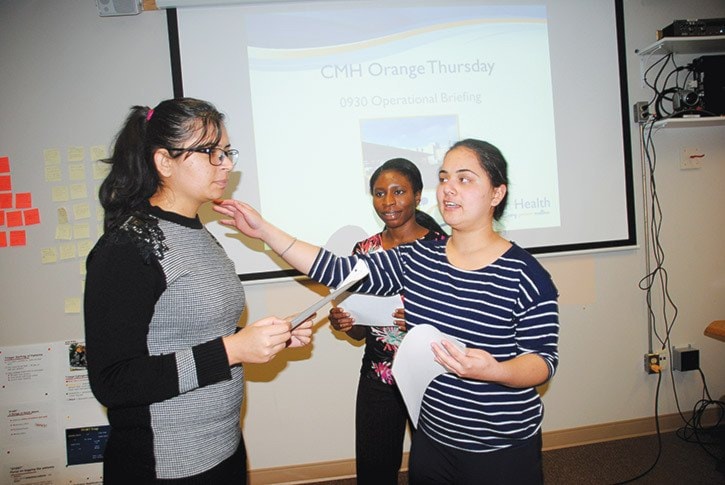The average person probably doesn’t realize that there are 11 official international emergency colour codes.
Most people have probably heard some of them, such as code blue for heart/respiratory distress, and code amber for missing/abducted child but many of the colours likely remain a mystery for most people.
Cariboo Memorial Hospital staff have all 11 colour codes and their meanings listed right on the back of the identification cards they wear around their necks.
Last week the hospital conducted its first simulated Code Orange exercise with all departments participating from emergency to records and discharge planning.
Code Orange is how a hospital handles the influx of mass casualties.
Three Interior Health representatives were on site to facilitate the exercise.
“During a Code Orange in normal operations every department will rally around to support the department in need, in this case it was the emergency that was overwhelmed,” said Colin Swan the exercise controller and emergency preparedness co-ordinator for IHA west.
Swan has been working on preparing the exercise for the past year with local Interior Health representatives Deb Trampleasure, manager of mental health and substance abuse for Cariboo Chilcotin and Barb Tymchuk, the acute health services director.
Tymchuk said the binder they based the exercise on has been three years in the making.
In the scenario practiced at the hospital Thursday, Oct. 6 a bus filled with a team of university volleyball students was involved in an accident a few miles north of the city.
Second year TRU nursing students played the 13 victims, who came into the hospital with a variety of mock injuries.
It was a functional exercise, meaning that the injured actors were not wearing injury makeup or costumes for the exercise, Swan said. Their information tags told them what to say and how to demonstrate their injuries.
As in a normal incident of mass casualties, Swan said the patients arrived by ambulance and by private vehicles.
The exercise involved triaging victims as they entered the hospital to three different areas of the hospital based on their initial symptoms.
During triage each patient is given a coloured bracelet designating the area where they will be further assessed and begin treatment.
Red tagged patients are the most seriously injured and stayed in the emergency room. Yellow tagged patients need the next level of care and were guided for the hospital day care treatment centre for assessment.
Green tagged patients are the “walking wounded” who are taken to the ambulatory care room for assessment.
At each stage of assessment patients are watched for changes in behaviour that may indicate they are in more physical distress than they initially exhibit.
For instance someone may come in with what appears to be a broken ankle and then go into shock, which requires immediate treatment.
“So there is constant reassessment of the patient’s condition at each stage,” Tymchuk explained.
She said every department was involved in the exercise and the feedback from staff is that they would like to do it again. She said there are some things they need to work on but overall the exercise went well.
